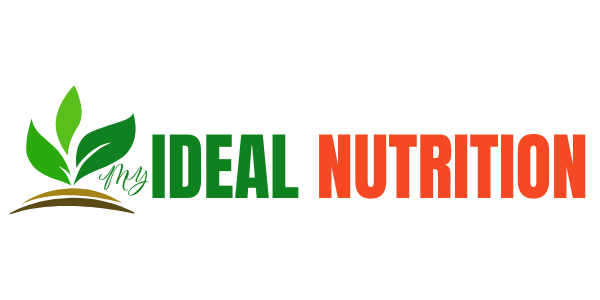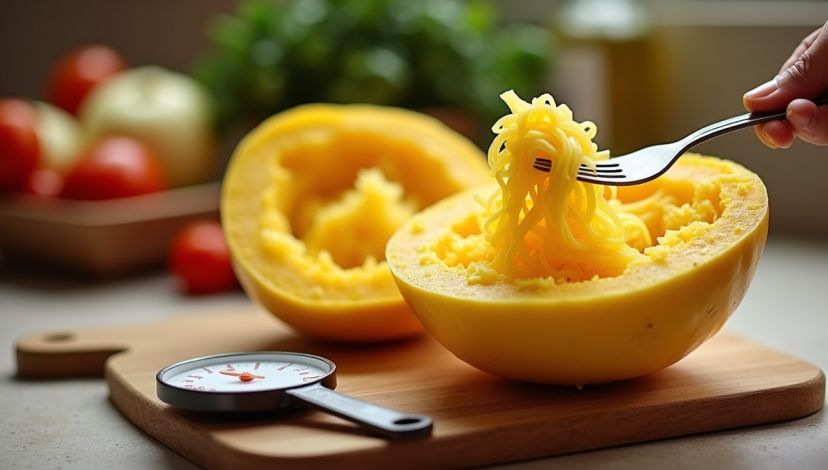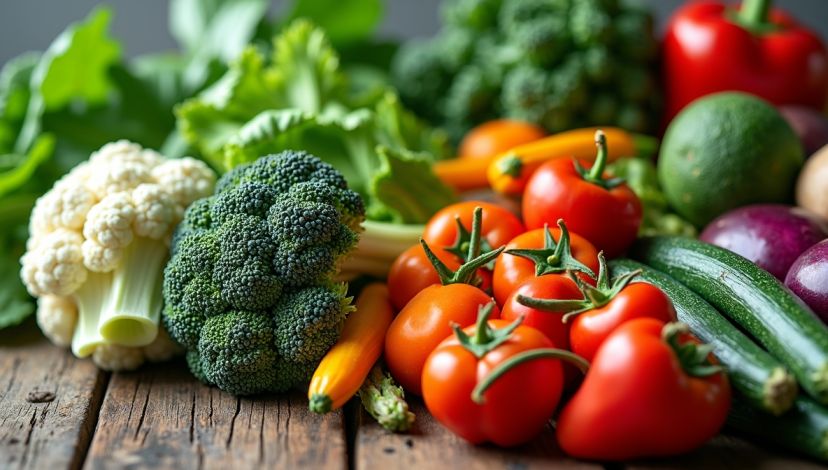Introduction: What Are Spaghetti Squash Calories?
Spaghetti squash is a common vegetable among people who seek to cut down on carbs or calories used. However, the question, How many calories does spaghetti squash really contain? is still prevalent among a large number of people. Understanding spaghetti squash calories can help anyone plan a healthier diet and find better alternatives to traditional pasta.
Spaghetti squash owes its name to its appearance upon cooking; instead of having a meaty, even mushy, texture, spaghetti squashes instead turn into strappy ‘noodles’ that can be served immediately, while still hot, or by cooling and finishing later as a cold dish. Nevertheless, compared to normal pasta, it has fewer calories and is hence popular among dieters and among low-carbohydrate diets. Be it cooked with roasting, steaming, or microwaving, spaghetti squash is an easy meal on a diet.
Now, we should take a closer look at the number of calories it contains, how many of those are compared with other foods, and what makes it one of the best ingredients you should take into a healthy diet.
3 Major Points:
- Spaghetti squash is a vegetable with low calories.
- It can be used as an ideal substitute to pasta in low-carb diets.
- It contains fiber, vitamins, and contains less calories compared to the traditional pasta.
The amount of calories in spaghetti squash.
It is common that whenever you mention squash, the mind can run wild and start thinking that this is a highly sugary, calorie-dense food, and this is not at all true with spaghetti squash. A servings portion is one cup of cooked spaghetti squash, which holds approximately 40 calories. This is so much lower than regular spaghetti, that contains more than 200 calories in a single cup. That is why spaghetti squash can commonly be found in keto and paleo diets as well as low-calorie diets.
As well as Spaghetti squash is low in calories it is also low in sugar and fat. It contains most of its calories in complex carbohydrates as dietary fiber, which is excellent on digestion and appetite.
Nutritional Breakdown (1 Cup cooked spaghetti squash):
| Nutrient | Amount |
| Calories | ~40 kcal |
| Carbohydrates | 10 grams |
| Fiber | 2.2 grams |
| Protein | 1 gram |
| Fat | 0.4 grams |
| Water Content | ~90% |
This means that it is an excellent volume eat food to eat. You will be able to eat much and at the same time reach your daily calorie target. Additionally, due to its water content, it keeps you full and does not add a lot of calories.
Reminder: Spaghetti squash calories may vary slightly depending on cooking method and added ingredients like oil or cheese.
Does Spaghetti Squash Diet Work?
Yes, absolutely! Spaghetti squash is a good option to reduce weight because of its low calories in it. You can eat the large portion of one cup because there are only some 40 calories. It is used as a substitute of pasta by many people as a foundation of such dishes as spaghetti squash Alfredo or squash Bolognese.
The low calories notwithstanding, the fact that it is rich in fiber ensures that you take a longer time before hunger strikes again, eliminating a strong urge to snack in between meals. Combined with lean meats such as grilled chicken or turkey, it is a healthy, satisfying, and low-calorie food.
So, how can we compare spaghetti squash and regular spaghetti?
Comparison Table of Calories (per Cup Cooked):
| Food | Calories | Carbs | Fiber | Fat |
| Spaghetti Squash | 40 | 10g | 2.2g | 0.4g |
| White Pasta | 220 | 43g | 2g | 1.3g |
| Whole Wheat Pasta | 175 | 37g | 5g | 0.8g |
As it can be seen, the use of spaghetti squash offers a very big saving in terms of calories. This could be a big difference in the weeks or months of dieting.
Note: Spaghetti squash is useful in weight loss, but the ingredients you add may increase the weight fast, e.g., cheese, oil, and sauces.
How Do Cooking Methods Affect Spaghetti Squash Calories?
How you prepare spaghetti squash may slightly reduce the calories. Fresh spaghetti squash contains about 31 calories in 100 grams, but after cooking (bake or steam) it contains slightly moistened water alternative, the calorie density may vary. Nevertheless, it is the augmented ingredients that really make a difference.
And now let us analyze it by method:
1. Among them, steamed and microwaved
This is the least calorie-dense approach. There is no added oil, and the calories are nearly that of the raw one. It suits very well the people who watch their calories strictly.
2. Roasted or Baked
The taste is increased by oven-baking. In case you add oil (olive oil or butter), you will increase the calories. A single tablespoon of olive oil contains roughly 120 calories, hence the need to exercise moderation.
3. In Pan Administered
Commonly employed in recipes as a substitute of pasta recipes. The squash original calories can be doubled or tripled by the addition of oil or other fats.
Comparison of Cooking Methods (per 1 cup cooked):
| Cooking Method | Calories (Approx.) |
| Steamed | 40 |
| Baked (w/o oil) | 42 |
| Baked (w/ oil) | 80–160 |
| Sautéed | 100–180 |
To keep spaghetti squash calories low, it’s best to use calorie-free seasonings like herbs, spices, lemon juice, or vinegar.
What are the other Nutritional Values of Spaghetti Squash?
Spaghetti squash in addition to being low in calories, contains a variety of vitamins and minerals. It contains:
- Vitamin C that boosts your immunity system.
- Vitamin B6, which is essential to the health of the brain.
- Potassium, which is an aid in the regulation of blood pressure.
- Manganese, which is effective in metabolic processes and bones.
It also happens to be naturally gluten-free, so at least celiacs or people with gluten sensitivity need not worry about it.
Also, spaghetti squash is dehydrating, as water content is rather high, and it eases digestion, as it has fiber. Fiber does not only helps in the normal bowel movement but also helps in regulating blood sugar as well as cholesterol.
Energy-wise, it is a slow-release carb so the energy release is steady as opposed to certain foods that are high carb and have that rapid release of energy that comes as a sugar rush.
Here is an example of a healthy recipes:
- Spaghetti Squash Stir-Fried
- 1 cup of cooked spaghetti squash.
- 1 tsp Olive oil
- 1 cup of chopped vegetables
- 1 scrambled egg
- Low-sodium soy sauce (calories: 180 ~kcal)
Is it possible to consume Spaghetti Squash every day?
Of course you can. Spaghetti squash is safe to consume on a daily basis and can form a balanced diet. It is a healthy eating food due to its low calorie and nutrient richness. There is, however, a twist of balance. A combination of different vegetables means greater benefit of nutrients.
Individuals with sensitive stomachs might be required to use small amounts, since sometimes squash might bring slight bloating because it is rich in fiber. This can be prevented by drinking the right amount of water as well as gradually adding a lot of dietary fiber.
As well, you can think about changing the preparation. These are some of the healthy and imaginative ways of enjoying it:
- As a substitute of pasta with tomato or pesto sauce
- Turkey, black beans, and spices stuffed into a squash boat
- A breakfast made up of squash hash, eggs, and vegetables
- Garlic and herbs baked squash patties
The flexibility in using this vegetable implies that you can have it in numerous ways without getting bored.
The conclusion: Why Spaghetti Squash is an Intelligent Low-Calorie Food
In conclusion, spaghetti squash calories are impressively low, making it one of the best vegetable choices for anyone looking to cut calories without sacrificing volume or satisfaction. It contains about 40 calories in one cup, and it is the same in the note of supply over traditional pasta dishes and most of the high-carb foods.
Due to its high water, fiber, and nutrient content, such as vitamin C and potassium levels, it is a good supplement to any diet. Spaghetti squash has its health advantages with minimal downside, no matter whether you want to trim down, eat clean foods, or even experiment with new foods.
Simply remember how you cook it and what you put to it. To maximize the use of this great vegetable, make sauces light and toppings healthy.
FAQ’s
1. What is the amount of calories in the whole spaghetti squash?
An entire medium-sized spaghetti squash (counting 4 cups cooked) also has about 160 180 calories.
2. Is spaghetti squash weight loss-oriented compared to pasta?
Yes. Spaghetti squash also contains a lot of fiber and much fewer calories as compared to regular pasta, which makes it viable in weight loss.
3. Are there carbs in spaghetti squash?
Yes, though they contain fiber, which is a complicated carbohydrate. About 10 grams of carbs are in one cup.
4. Does spaghetti squash fit in a ketogenic diet?
It is compatible with a low-carb diet, but it would have too many carbs to qualify as a strict keto diet. Seek to use small amounts.
5. How can I reduce the number of added calories to prepare spaghetti squash?
Oils, butter or cheese should also not be used too much. Instead, use herbs and spices as well as low-calorie sauces.ead.













